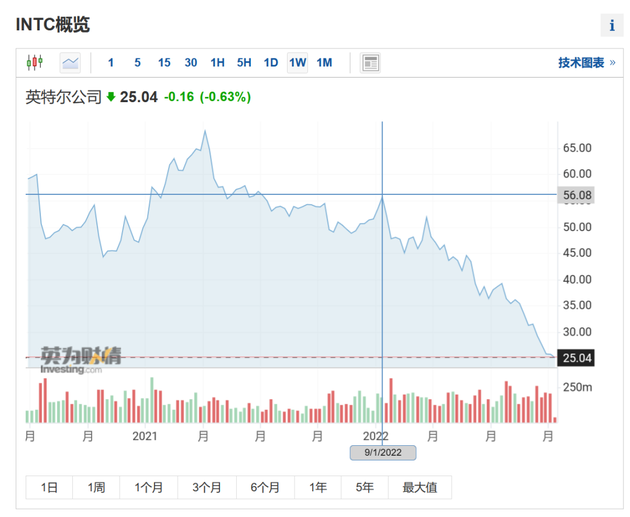your current location is:Home > Finance > depthHomedepth
Video overlord YouTube "re-evolves"
YouTube is continuing to expand the global reach of its video service.
YouTube plans to launch an online store for streaming video services as early as this fall,media reported. The service, dubbed the "Channel Store", allows users to watch trailers of content from various streaming platforms on YouTube and subscribe to the corresponding streaming services "one-stop" from which YouTube will Get dividends.
In recent years, YouTube has launched a number of services other than the main site. Among them, YouTube TV has become the largest Internet pay TV platform in the United States; and YouTube Shorts, which focuses on short video content, claims to have 1.5 billion monthly active users, approaching TikTok.
At a time when competition among global streaming media platforms is intensifying, YouTube, backed by its absolute traffic advantage, may become an effective way for other platforms to leverage on to open up new user groups.
For YouTube, becoming a larger content aggregation platform and allowing users to stay in its own ecosystem will help it further consolidate its status as the global "video hegemon".
Streaming media "competition for hegemony", Youtube to help drain?
In recent years, when offline theaters have been hit by the epidemic and their box office revenue has plummeted, the world's major streaming media platforms have ushered in rapid growth.
At this year's Oscars, a streaming film rewrote history. With the "Listening Girl" produced by Apple's streaming platform Apple TV+ becoming the first streaming movie to win the Oscar for best picture, the production level of streaming movies has begun to be recognized by the mainstream, and its influence cannot be underestimated.
Data shows that under the trend of "streaming media", the number of streaming media subscribers in the United States will continue to grow, and the number of subscriptions will reach 456 million by 2027.
The "championship competition" between streaming media platforms is also becoming more and more intense. From traditional Hollywood film giants such as Disney and Warner Brothers, to Internet technology companies such as Amazon, Apple, and Microsoft, and even retail giant Walmart, they are all adding streaming media platforms.
As more competitors flock to the same track, the former pattern is changing.
The latest earnings report released by the world's largest streaming platform Netflix shows that its global subscribers have declined for two consecutive quarters. In the first quarter of this year, Netflix lost 200,000 global paid subscribers, the first decline in more than a decade; in the second quarter, Netflix lost another 970,000 subscribers.
Disney+, the streaming media platform owned by Disney, has been launched for less than three years, but under the continuous high user growth, the number of subscribers in the second quarter of this year has surpassed Netflix.

For streaming media platforms, membership subscriptions are crucial, and the competition between platforms for user attention and traffic has made YouTube see an opportunity.
Compared to other platforms, YouTube undoubtedly has the "strongest" traffic. As the second most visited website in the world, Youtube's traffic is second only to Google. Data shows that in 2021, 2 billion users will use Youtube every month, and its annual page views will exceed 34 billion.
One statistic shows that people watch more than 1 billion hours of video on YouTube every day, more than Netflix and Facebook combined. On mobile alone, YouTube reaches more viewers between the ages of 18 and 34 than any TV network.
For the already saturated streaming market, YouTube can be an effective way to tap into new audiences. Especially for smaller media companies or those producing original content, partnering with streaming platforms allows them to spend more money on content production.
But making original videos isn't YouTube's forte. YouTube has also tried before, launching YouTube Originals and producing its own original video content, aiming to compete with streaming platforms such as Netflix and Amazon, but ultimately failed.
In January of this year, YouTube announced that it would no longer continue to invest in original videos and disband the YouTube Originals team.
For YouTube, it seems to be a good business to make money from platform dividends without investing a lot of cost in producing content through the soon-to-be-launched "channel store".
At present, YouTube is negotiating with a number of cooperative streaming platforms to agree on details such as dividends.
The strategy of "Video Overlord"
Before YouTube, Roku, Amazon and Apple had already taken a fancy to the business opportunities of aggregated streaming platforms as global giants deployed streaming media more and more quickly.
For users, the quality of the content is more of a concern when choosing a streaming service than the platform it comes from. According to a 2019 survey by Amdocs, a provider of software and services for the communications and media industries, nearly 4 in 10 consumers said a single aggregation platform that only needs to log in once would be their best solution.

According to foreign media reports, various streaming media companies are trying to promote their streaming video services on various platforms to attract more users and increase subscription rates. These include NBCUniversal, owned by cable giant Comcast, which is reaching out to potential partners to discuss adding its streaming service Peacock to their apps.
The drainage effect of the aggregation platform is "remarkable". Take Amazon's Prime Video, for example, which brought in 4.5 million subscribers in partnership with Warner Bros. Discovery's HBO Max.
Although Amazon and Apple have already occupied a strong position in streaming media aggregation services, Youtube is clearly confident of using its huge user base to take a share of the field.
In addition, the "Channel Store", a new service for aggregating content, will further help YouTube consolidate its "video dominance" position, keeping users and traffic on its own platform.
Although there are as many as 2 billion monthly users, YouTube has always faced the problem of fragmented traffic and limited user loyalty.
Many users do not directly click on the YouTube website to watch the video, but jump through the links of other social networking sites such as Facebook and Twitter to complete the viewing. With platforms such as Facebook also starting to roll out their own video services, YouTube risks further diversion of users.
In recent years, YouTube has successively launched a number of differentiated services around video content, ranging from online TV live programs, children's content platforms to short video platforms.
Among them, in YouTube TV launched in 2017, an aggregated media service similar to the "channel store" also appeared.
YouTube TV is mainly for the US market. In addition to providing live broadcasts from 85 TV stations, it also provides users with paid subscriptions to other channels such as HBO Max, Starz, and Showtime.
In June 2022, YouTube TV surpassed 5 million subscribers, making it the largest internet pay-TV platform in the United States.

After extending the content to the field of short videos, YouTube's business has also been "prosperous".
According to data from June this year, YouTube Shorts, a short video platform that has been launched for less than two years, has reached 1.5 billion monthly active users, approaching TikTok, which has 1.6 billion monthly active users.
At the beginning of this year, when YouTube announced the termination of original content investment, it further clarified the direction of its future layout - turning to services such as YouTube Shorts and YouTube Kids.
Although YouTube is already a video platform with more and more comprehensive coverage of content and services, it has not yet found a good way to integrate high-quality film and television content onto the platform.
And launching a video "channel store" may be an effective attempt. On the one hand, this will help increase users' loyalty to the platform, and on the other hand, it can also create more profit models for YouTube other than advertising.
There are concerns about cooperation, and there are still variables in the future of the channel store
For that to happen, however, YouTube must convince other streaming platforms that it doesn't pose a long-term threat to their established businesses.
For some emerging platforms, they may be eager to cooperate with YouTube due to the demand for traffic flow, while for some larger platforms, the concerns caused by cooperation with YouTube are difficult to ignore.
Similar things have already happened. Last September, Warner Bros. Discovery's HBO Max was pulled from Amazon Prime Video. Andy Fussell, who was HBO Max's general manager at the time, said Amazon Channels limited HBO Max's ability to build direct relationships with consumers.
"Grafting" on the Amazon platform has brought a large number of new customers to HBO Max, but it also allows Amazon to have complete information about the audience of HBO Max. Some analysts believe that given that Amazon also owns its own streaming media platform Prime Video, it is difficult to limit its use of HBO Max data to improve its own platform services, which may directly affect the long-term cost of HBO Max.
So even though the previous partnership has brought HBO Max 4.5 million subscribers, and quitting Amazon could cost 5 million subscribers, Fussell is still resolute in his willingness to quit.
To mitigate potential user losses from exiting Amazon’s platform, HBO Max is offering a 50% discount on HBO Max’s ad-free plan to new and existing users of the platform, as well as consumers accessing HBO through Amazon Prime Video Channels. However, recently there has been news that the two will continue to cooperate.

As movie media companies increasingly rely on video platforms such as YouTube, which still poses a certain "threat" to the TV and film industries, it has been seen as a "necessary evil."
Whether YouTube's upcoming "channel store" can operate well in the long-term may also depend on how other streaming media platforms evaluate YouTube's huge audience value and the platform traffic, revenue, and related data value that it diverts.
Previous:telecommuting does not make workplace bullying go away, professional bullying also goes remote
related articles
Article Comments (0)
- This article has not received comments yet, hurry up and grab the first frame~











